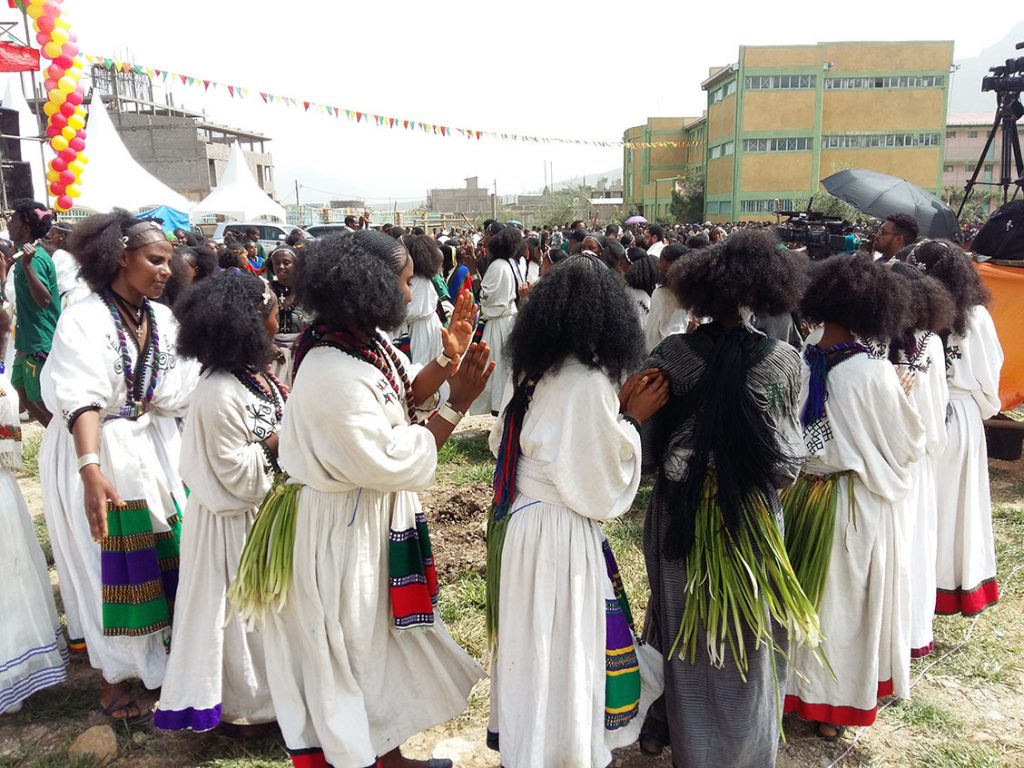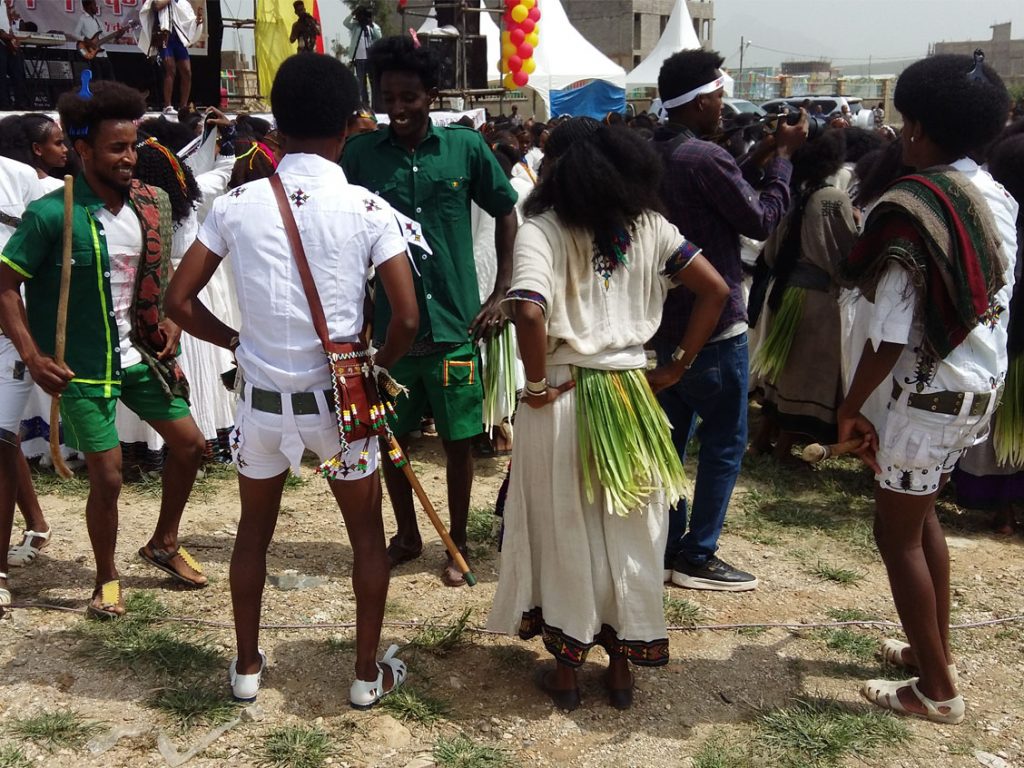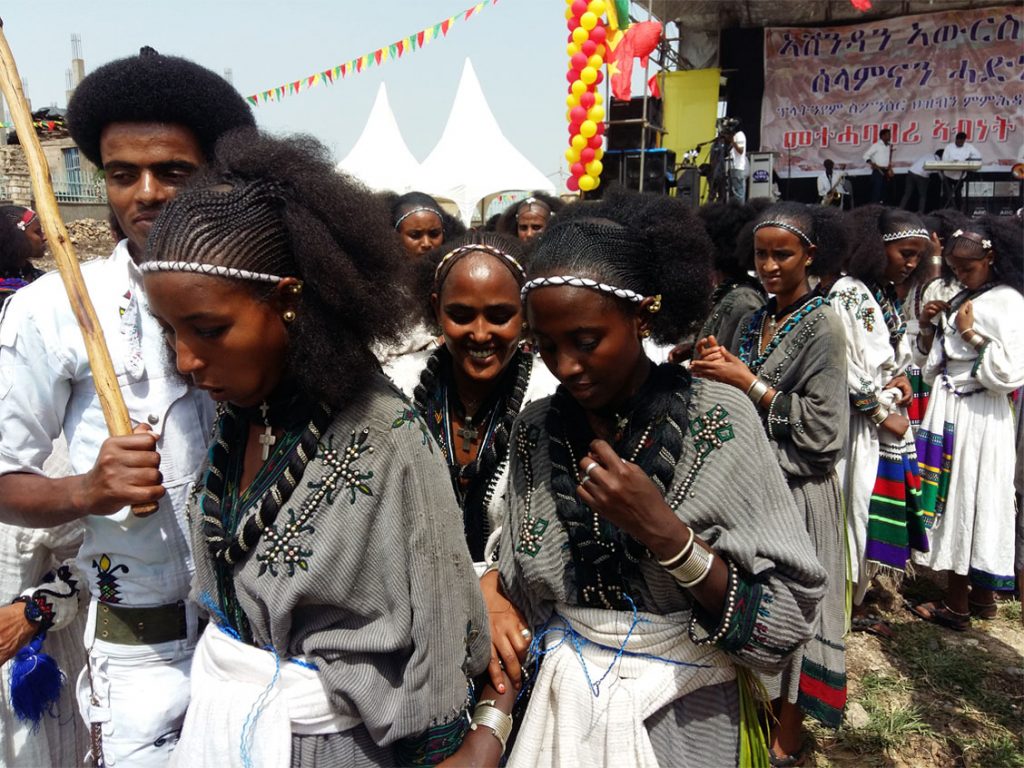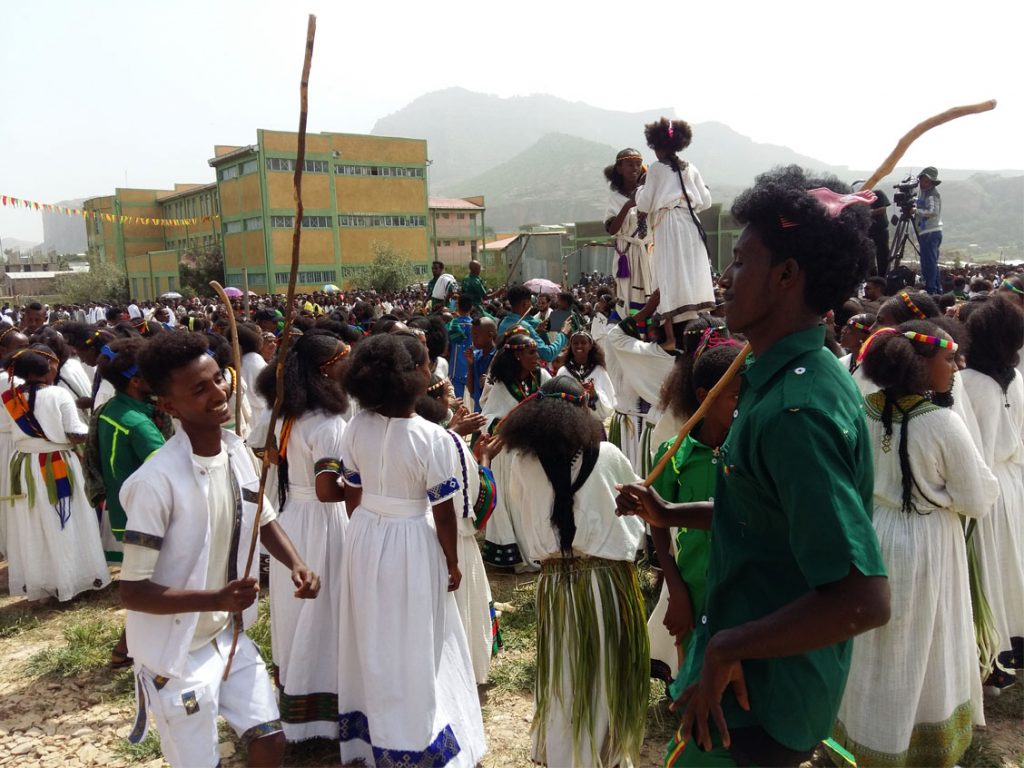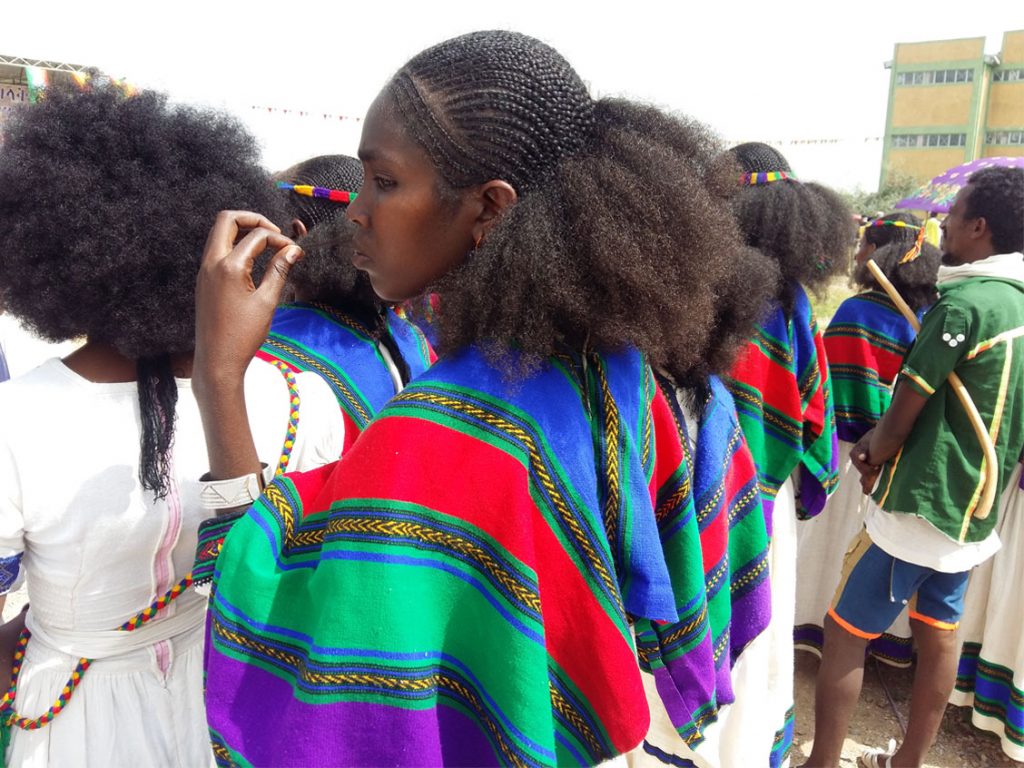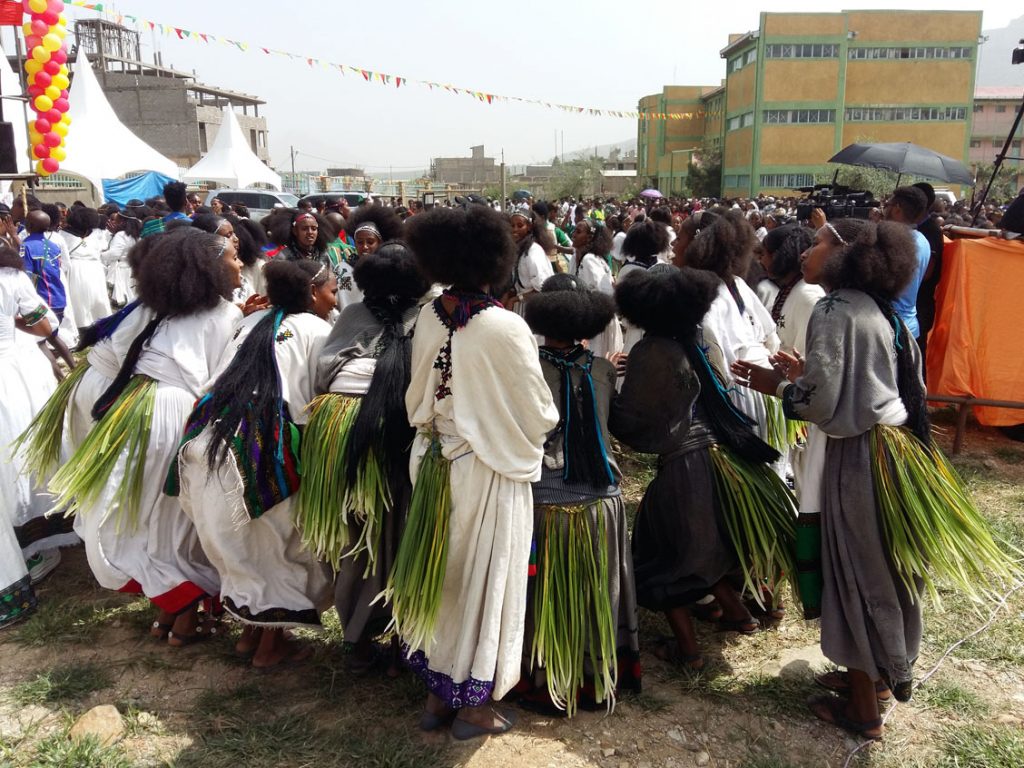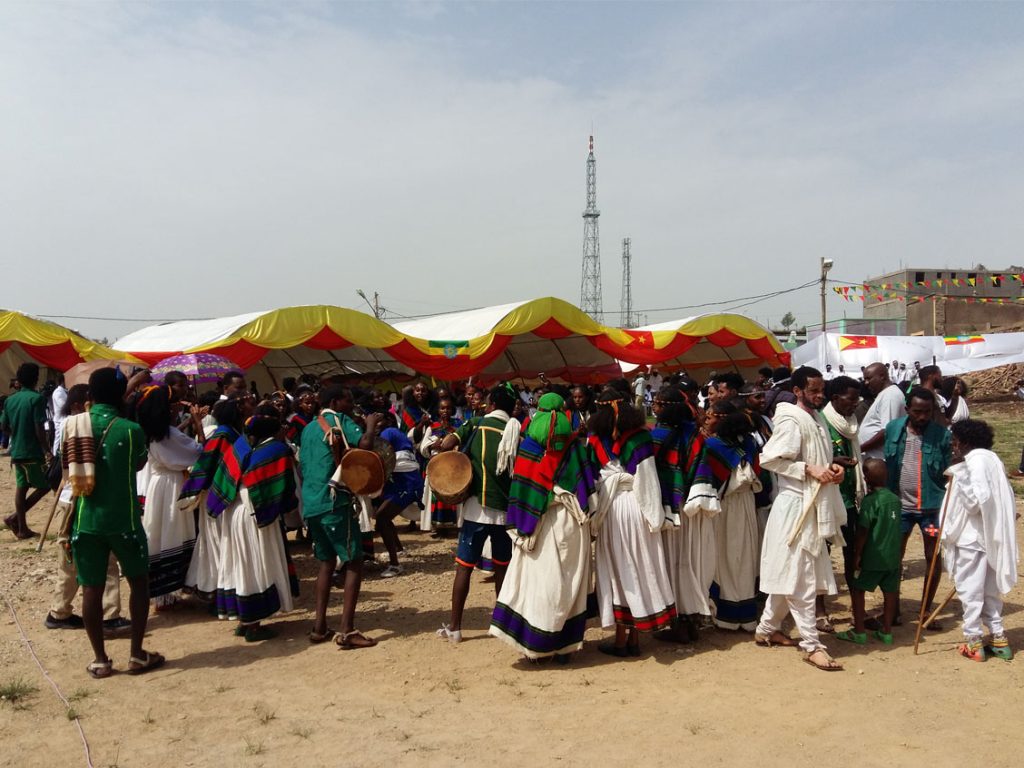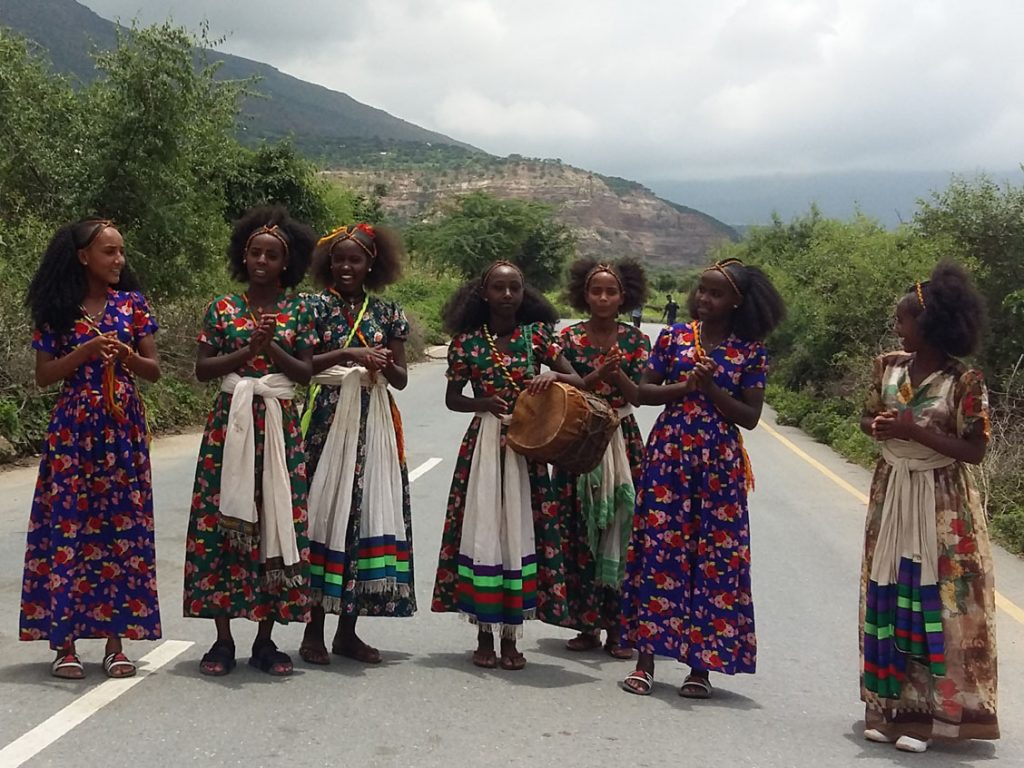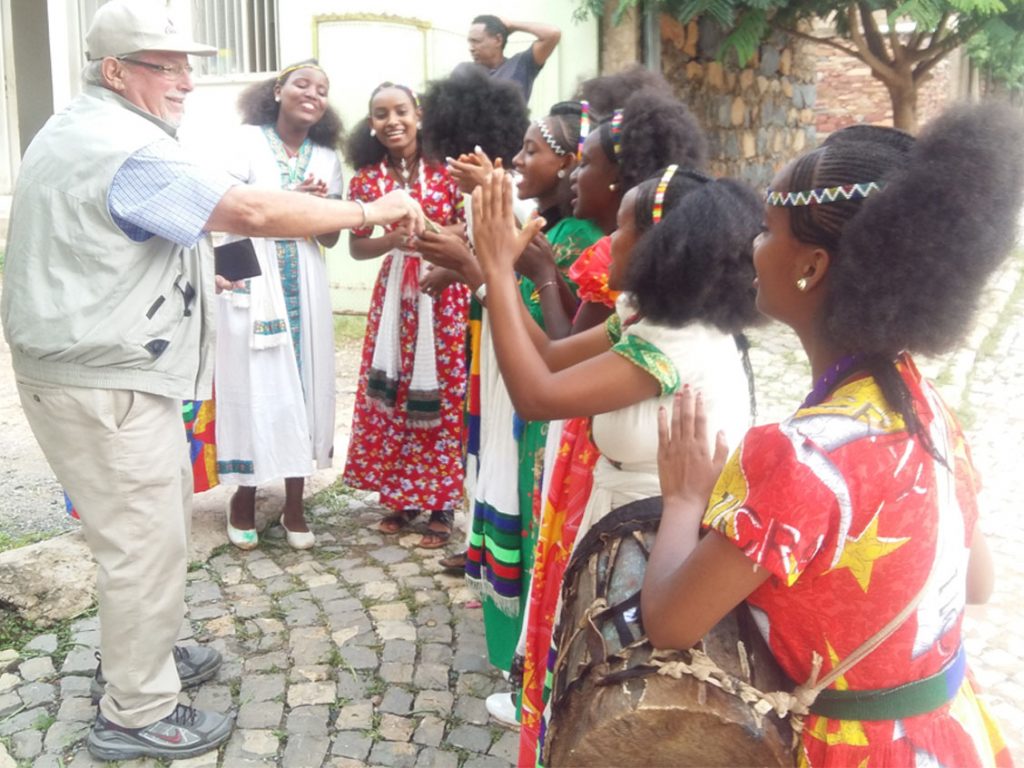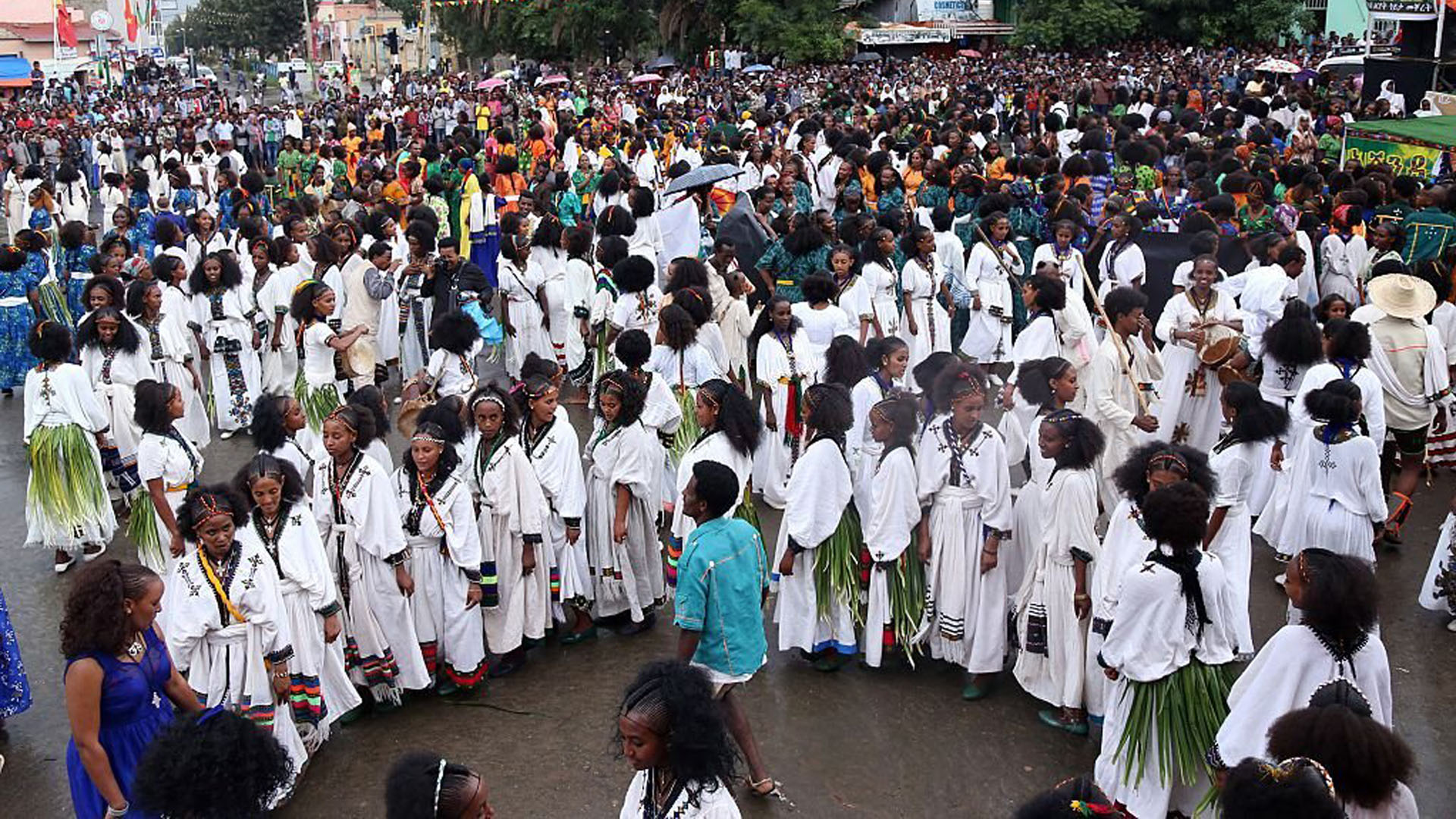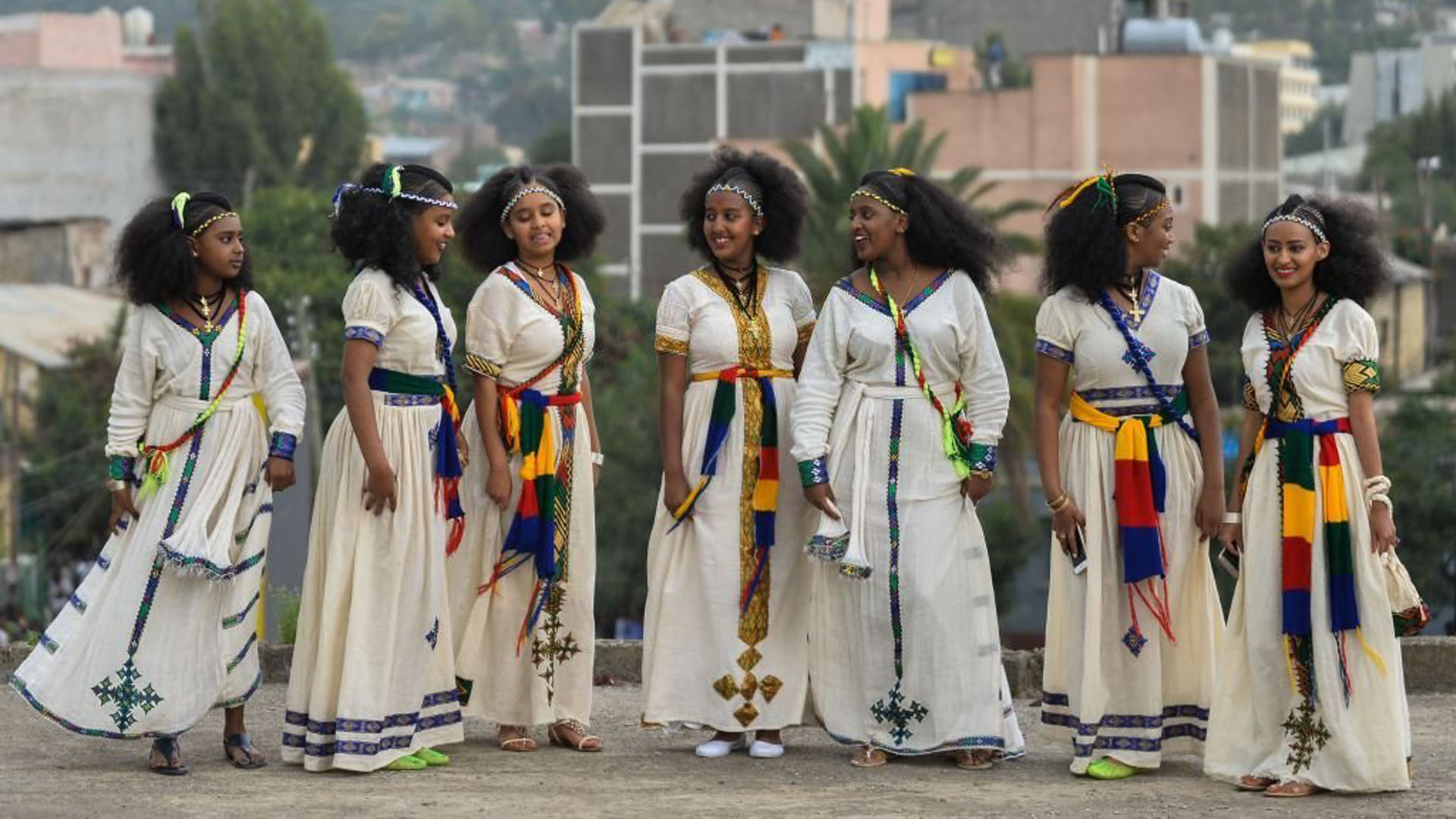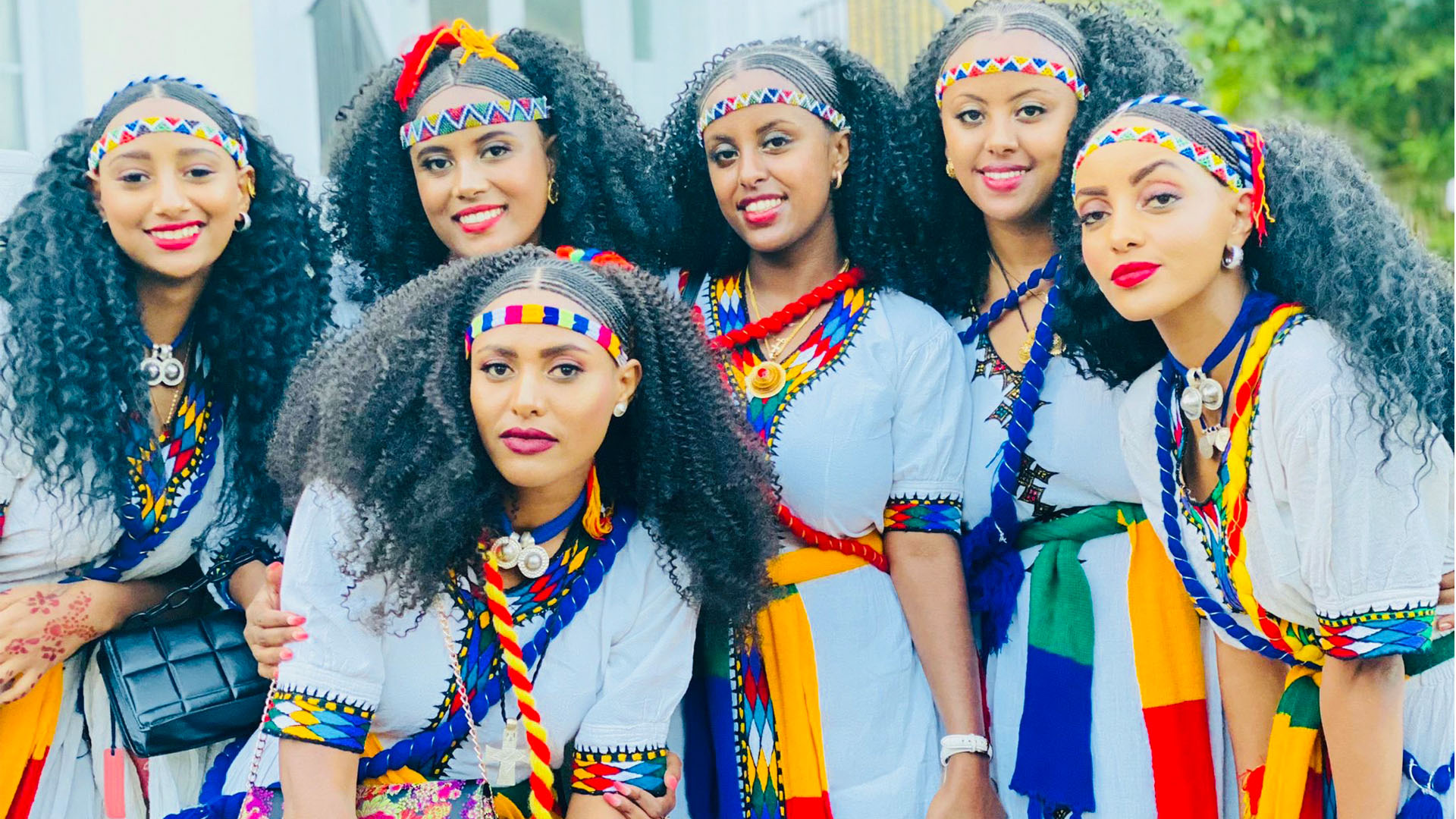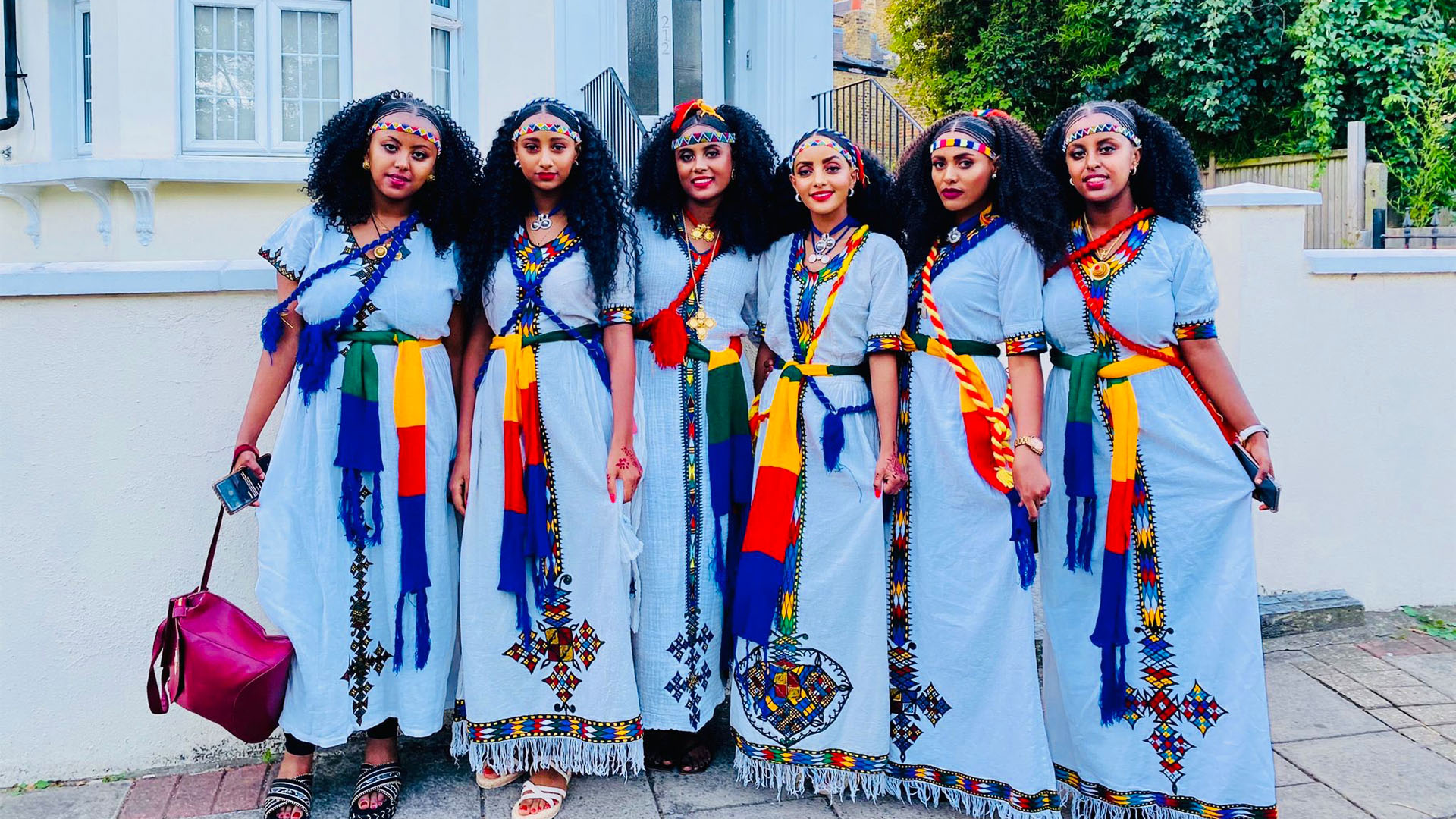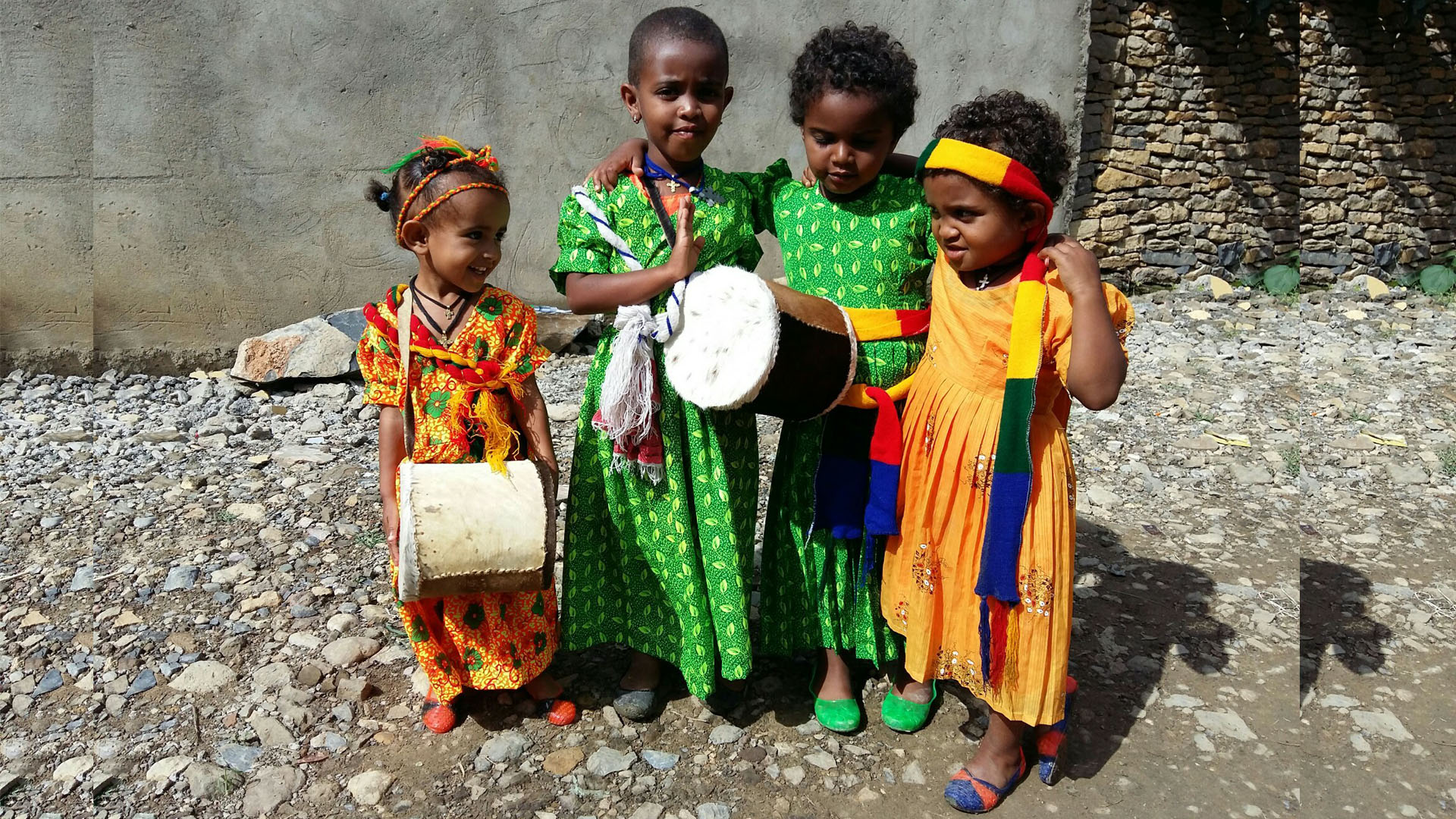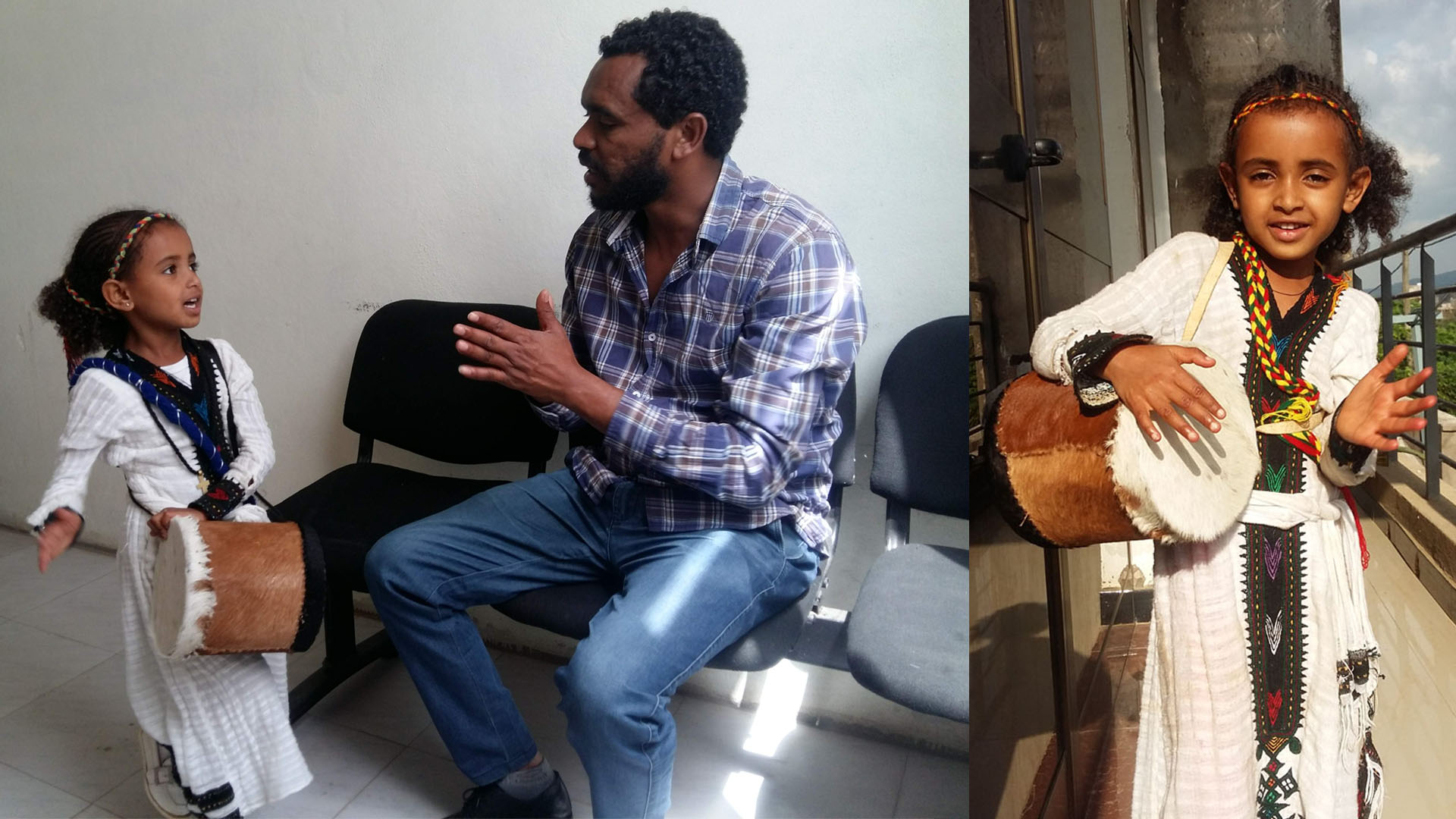Ashenda (Tigrigna: ኣሸንዳ) is a festival celebrated in August in Tigrai, and neighboring Agew. The name “Ashenda” came from the name of tall green grass, estimated at around 80–90 cm minimum height, that the girls make into a skirt and wear it around their waist as a decoration.
In the tradition of this religious festival, blades of grass are strewn on the floors of homes and shops as a kind of welcome mat.
Ashenda marks the end of two-week-long fasting known as Filseta (Ge’ez: ፆመ-ፍልሰታ) when adherents of the Tigrai Orthodox Church gather to honor the Virgin Mary, but the holiday has grown way beyond that now. It has become a cultural event.
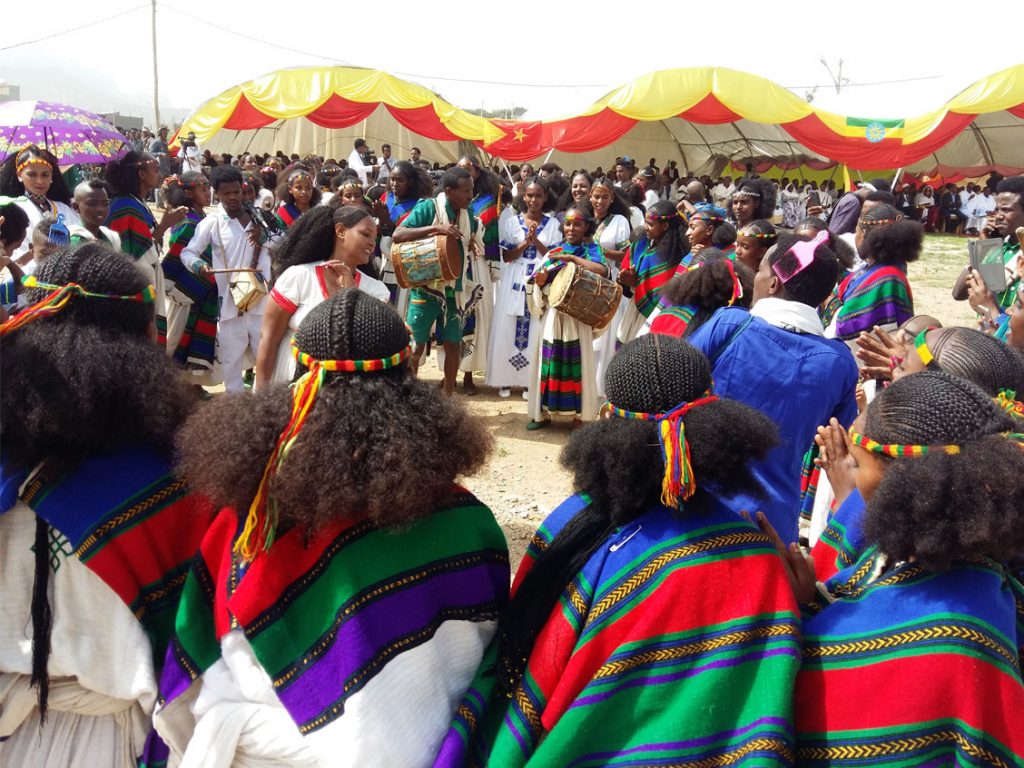
Every year Tigrian young girls eagerly await the great day that dawns Ashenda, the colorful festival. Young girls, young ladies especially teenager girls go euphoric on this day because it is the day they are allowed a green light to go out to the streets singing and dancing with friends and peers for a week. They chant songs and show their grooving styles to their hearts’ content attired with eye-catching costumes.
Although the way & duration of Ashenda celebration slightly differs among rural and urban and/or from one local district to the other, the main theme, in most cases the starting date, and the overall festivity are the similar. In rural areas, it is celebrated for almost a month running from mid-August to mid-September every year, i.e. from Nehase 16 (August 22 in GC) to Meskerem 17 (September 26). Meskel, another important holiday marks the end of Ashenda. In urban areas (could be mostly due to a different business-based environment and mixed culture effects), it’s commonly celebrated for three days, from Nehase 16 (August 22 in GC) to Nehase 19 (August 25). This type of celebrating the day is a young revision of the old month-long one.
Ashenda girl doesn’t wear common clothes on this much-awaited event, since it is her special day she would wear a special and colorful, cultural dress with unique hairstyles and jewels on her neck, as well as ornaments on their hands, ears, and feet.
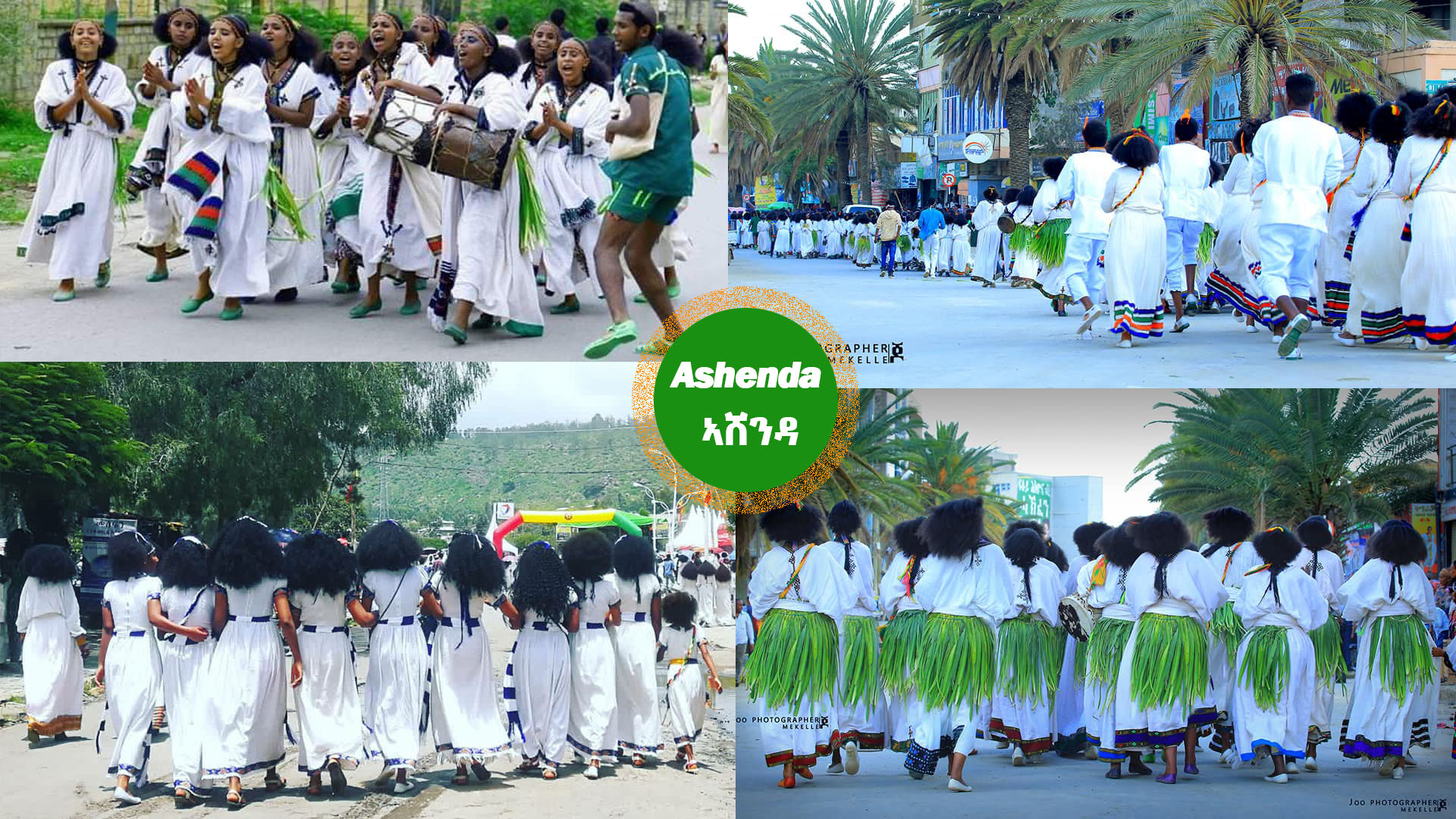
From the fact that all girls beautify themselves very carefully, there is a local old saying in Tigrigna “ቆልዓ ኣሸንዳ ሪኢኻ ኣይትተሓፀ” meaning “don’t propose to an Ashenda girl” or something to that effect. The point is that all the women here are beautiful during Ashenda. After a yearlong busy task, this time of the holiday is all about the girls and having fun. Parents know this is their time and they let them free of any household work.
After the girls get together and beautify themselves with new dresses, fancy hairdos, and jewelry, then they take to the streets with a hand drum for three crazy days (in the urban) in groups chanting with different songs specific for that time. They hunt for men, circle around them, and request them to pay anything they can in such beautiful cultural songs and dances. As already said earlier, the celebration goes on for a month in rural dwellings. They form big groups around the men and dance and sing in order to solicit donations from the guy. It’s kind of like Halloween Trick-or-Treating, but they won’t let you leave without paying. If you do, there are such songs dedicated for those who don’t pay, a kind of culturally accepted insult. It’s fine as long as you are not in a hurry and have lots of small bills to give out. There is no specific amount as to how much money you can pay, you are welcome to give any amount you can.
They continue the whole day going from house to house and occasionally stopping in a village or city center singing and dancing for a while before they go on again on their tour. Young boys accompany Ashenda girls wearing cultural costumes. Usually, they grab a stick as bodyguards to the Ashenda girls.
Most holidays are usually based on significant religious dates and are celebrated by attending church and eating big elaborate meals at home. These meals are painstakingly prepared by the women of the household for a day or two prior to the holiday. The food is awesome and is usually accompanied by coffee ceremonies (prepared by the women) and other drinks like Siwa or Mes (local home-brews also prepared by the women of course). The women serve guests, usually men, as well as their own families.
Although ‘Ashenda’ is the very common name given to the celebration, there are also some local names, depending on the specific localities, and sometimes with slight differences in the dates of celebration.
The festival of Ashenda has cultural, religious, and economic importance, and encourages industriousness. Once traditionally a girls’ festival, it has since gained widespread recognition and popularity in Tigrai, Eritrea, and among communities of the Tigrian diaspora.
Historic cord indicates that in 1910 E.C/1918 G.C Ashenda was celebrated in Tigray. History tells us Ashenda even existed before that.

Test your knowledge of Ashenda with these quizzes.
Sources:

